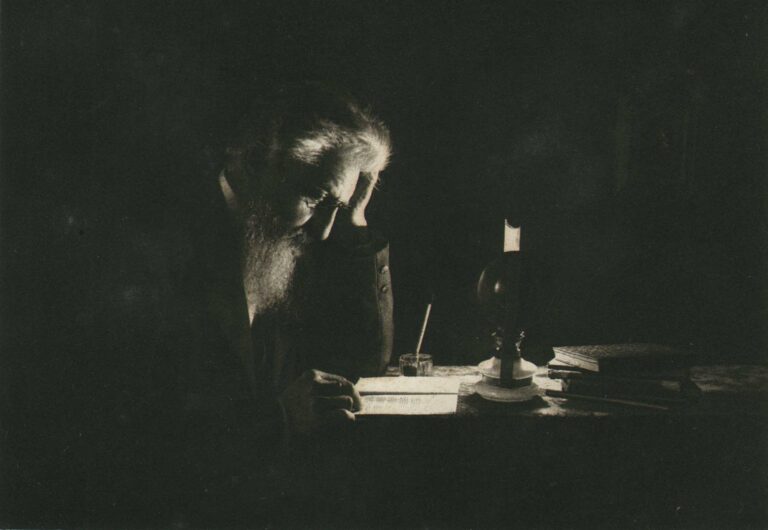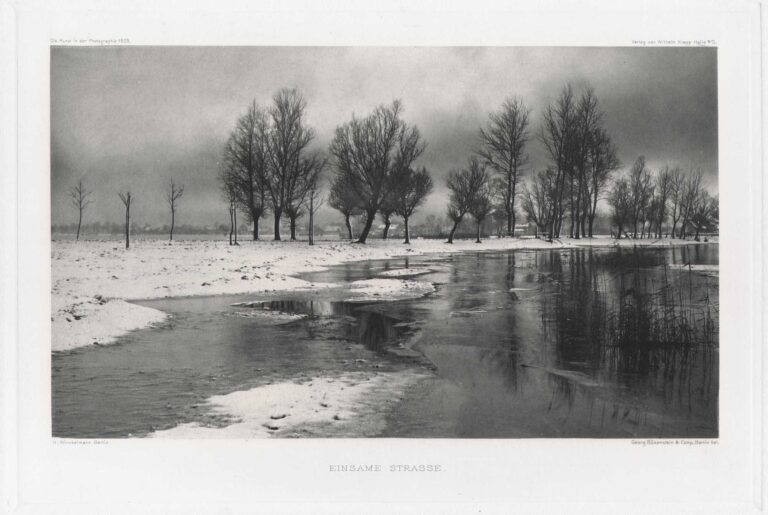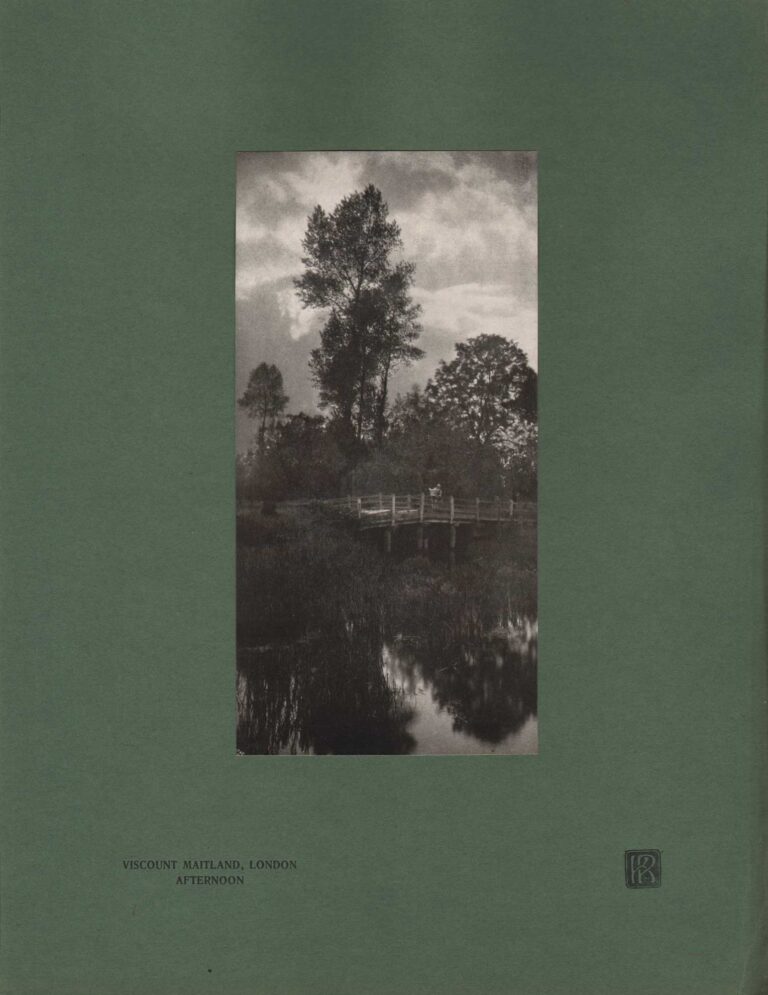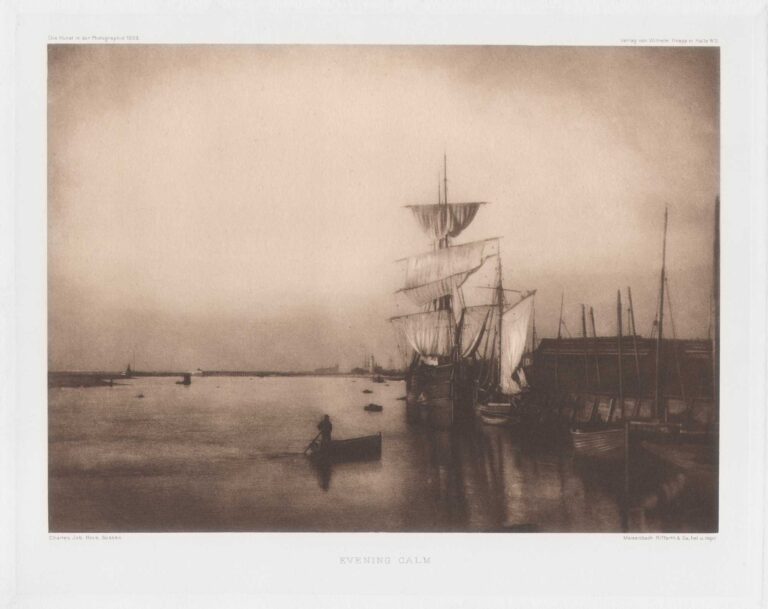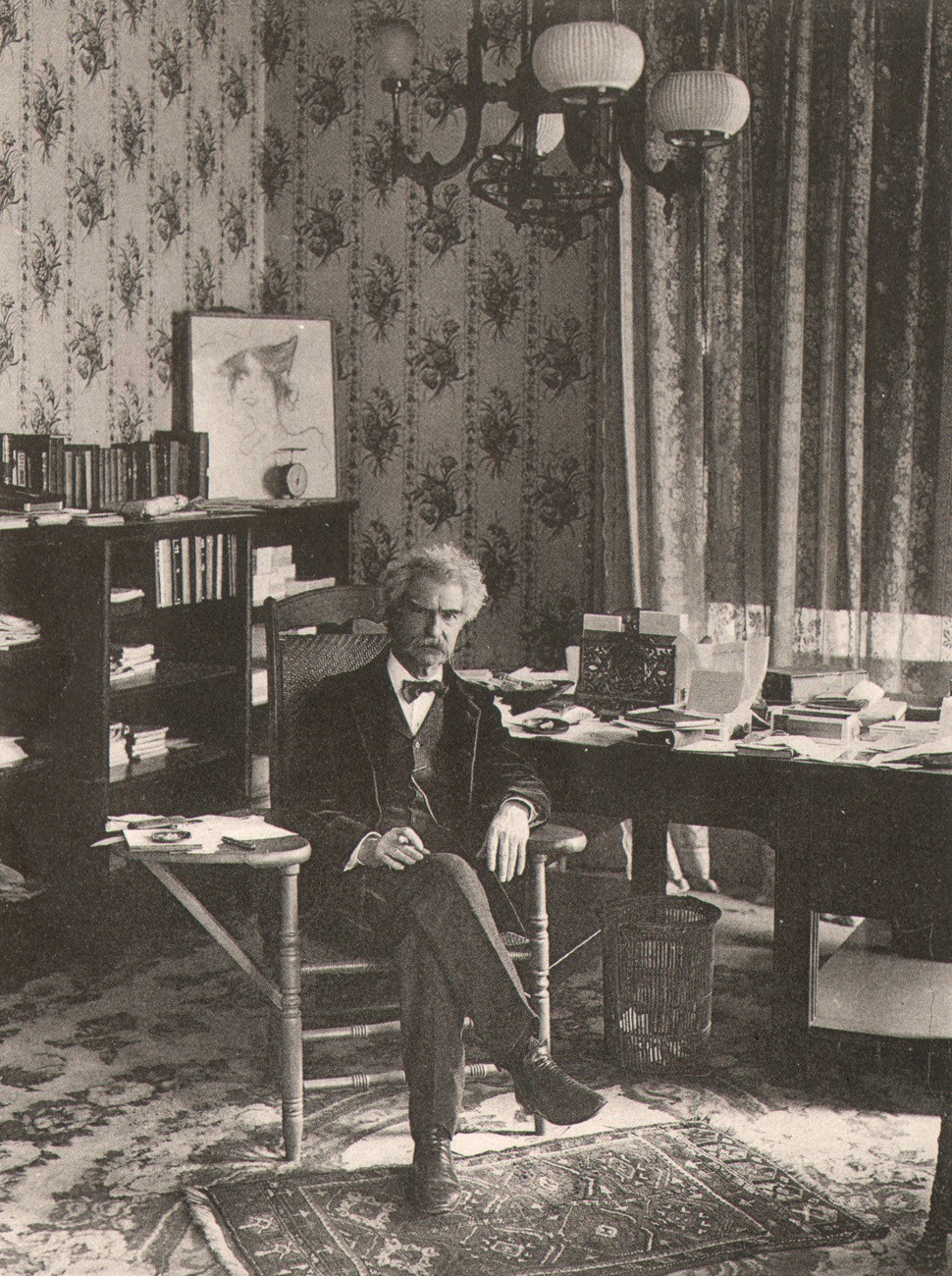
Mark Twain at Home
The American author and humorist Samuel Langhorne Clemens, (1835-1910) better known as his pen name Mark Twain, is seen here sitting for his portrait “At Home”. With the copyright date for this photograph by the Pach Brothers studio of New York City stating 1903, it could be assumed “Home” at the time was Stormfield, in Redding, Connecticut. Twain had moved here after returning from Europe in 1900.
Update: April, 2017: with the kind insight of reader David Manning, the proper location for this photograph is amended:
In 1903, Samuel Langhorne Clemens sits for a portrait in his study at Wave Hill, which overlooks the Hudson River and Palisades in the Riverdale section of the Bronx in New York City. According to R. Kent Rasmussen’s 2014 volume on the author: Critical Companion to Mark Twain: A Literary Reference to His Life and Work, Clemens lived at Wave Hill along with his family from October 1901 through 1903. Wave Hill was originally built as a country home in 1843 by jurist William Lewis Morris, and from 1866-1903, was owned by the publishing scion William Henry Appleton. A New York City landmark since 1960, when the estate was given to the City of New York, the home and grounds are now a 28-acre public garden and cultural center maintained by the New York City Parks District. The following historical overview of Clemens residency at Wave Hill is included at their website:
Mark Twain leased the estate from 1901-1903, setting up a treehouse parlor in the branches of a chestnut tree on the lawn. Of winter at Wave Hill he wrote, I believe we have the noblest roaring blasts here I have ever known on land; they sing their hoarse song through the big tree-tops with a splendid energy that thrills me and stirs me and uplifts me and makes me want to live always.
Alfred J. Meyer was a photographer for Pach Brothers studio of New York City at the turn of the 20th century. In 1906-1907, he was an exhibitor in the Royal Photographic Society annual exhibitions. His address at the time was 258 Chelsea Ave, Long Branch, New Jersey.
titled within upper left plate impression:
Copyright, 1903, by Pach Bros., N.Y.
titled within lower left plate impression:
Print by the Albertype Co., Brooklyn, N.Y.
Original copy for this entry posted to Facebook on April 18, 2012: (Amended: see above)
This photograph of Samuel Langhorne Clemens, better known as American author and humorist Mark Twain, was most likely taken at Stormfield, his Connecticut home in Redding, in 1903. An uncommon image, I could only track down one online example in the Visual History Collection at the University of Virginia library. The eminently quotable Twain had this to say about Photography, as taken from twainquotes.com: “A photograph is a most important document, and there is nothing more damning to go down to posterity than a silly, foolish smile caught and fixed forever.” (quoted by Elizabeth Wallace in Mark Twain and the Happy Island, 1913) Earlier, in the days of the wet plate, he addressed this letter to The Sacramento Daily Union in 1866: “No photograph ever was good, yet, of anybody–hunger and thirst and utter wretchedness overtake the outlaw who invented it! It transforms into desperadoes the meekest of men; depicts sinless innocence upon the pictured faces of ruffians; gives the wise man the stupid leer of a fool, and a fool an expression of more than earthly wisdom. If a man tries to look serious when he sits for his picture the photograph makes him look as solemn as an owl; if he smiles, the photograph smirks repulsively; if he tries to look pleasant, the photograph looks silly; if he makes the fatal mistake of attempting to seem pensive, the camera will surely write him down as an ass. The sun never looks through the photographic instrument that it does not print a lie. The piece of glass it prints it on is well named a “negative”–a contradiction–a misrepresentation–a falsehood. I speak feeling of this matter, because by turns the instrument has represented me to be a lunatic, a Soloman, a missionary, a burglar and an abject idiot, and I am neither.”
